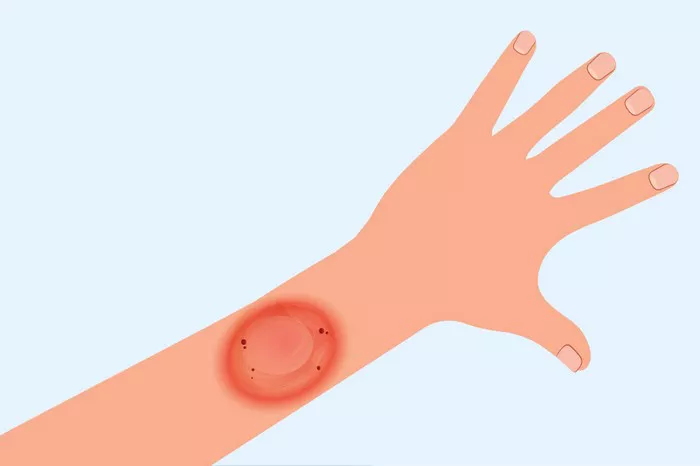Vitiligo, a chronic skin condition characterized by the loss of pigment, affects millions of people worldwide. This condition manifests as patches of skin losing their natural color, creating a noticeable contrast with the surrounding areas. Despite extensive research and numerous treatment approaches, one of the most pressing questions for those diagnosed with vitiligo is whether the condition is permanent.
Understanding Vitiligo
Vitiligo occurs when melanocytes, the cells responsible for producing skin pigment (melanin), are destroyed or cease to function. The exact cause of this destruction remains unknown, but it is widely believed to be an autoimmune condition. The immune system, which normally protects the body from harmful invaders, mistakenly targets and destroys melanocytes. Genetic factors, environmental triggers, and even stress are thought to contribute to the onset of vitiligo.
Types of Vitiligo
There are several types of vitiligo, classified based on the distribution of depigmented patches:
- Generalized Vitiligo: This is the most common form, where white patches appear symmetrically on both sides of the body.
- Segmental Vitiligo: This type affects only one side or a part of the body. It tends to appear at a younger age and progresses for a few years before stabilizing.
- Focal Vitiligo: Characterized by a few depigmented areas in a localized region.
- Trichome Vitiligo: A rare form where there is a white or depigmented center, followed by an area of lighter pigmentation, and then the normal skin color.
- Universal Vitiligo: An extremely rare type, where nearly all the skin loses its pigment.
Symptoms and Diagnosis
The primary symptom of vitiligo is the appearance of white patches on the skin. These patches are more noticeable in people with darker skin tones. The condition can also affect hair, turning it white or gray if the melanocytes in the hair follicles are involved. In some cases, vitiligo can affect the mucous membranes, such as the inside of the mouth or nose.
Diagnosis typically involves a visual examination by a dermatologist. A Wood’s lamp, which emits ultraviolet light, may be used to highlight the contrast between normal and depigmented skin. In certain cases, a skin biopsy or blood tests may be conducted to rule out other medical conditions.
The Permanence of Vitiligo
The question of whether vitiligo is permanent is complex and multifaceted. While the condition itself is chronic and can persist for a lifetime, the permanence of the depigmented patches varies from person to person. Some individuals experience spontaneous repigmentation, while others may see no change despite treatment.
Spontaneous Repigmentation
In rare cases, spontaneous repigmentation occurs without medical intervention. This process happens when melanocytes in the hair follicles migrate to the affected skin areas, restoring pigment. However, spontaneous repigmentation is unpredictable and may not be permanent. The underlying mechanisms are not fully understood, and it is unclear why some individuals experience this phenomenon while others do not.
SEE ALSO: What Can Vitiligo Be Mistaken for
Treatment Options
Several treatment options aim to restore skin color or manage the appearance of vitiligo. These treatments vary in effectiveness and may not provide permanent results. The choice of treatment depends on the extent and location of the depigmented patches, the patient’s age, and their personal preferences.
Topical Treatments
- Corticosteroids: These are anti-inflammatory medications that can help return some color to the white patches. They are most effective in the early stages of vitiligo but can cause side effects like skin thinning with long-term use.
- Calcineurin Inhibitors: Tacrolimus and pimecrolimus are alternatives to corticosteroids and are particularly useful for treating areas where the skin is thin, such as the face and neck.
Light Therapy
- Narrowband Ultraviolet B (NB-UVB): This is the most common light therapy for vitiligo. Treatment involves exposing the skin to UVB light two to three times a week. It can stimulate melanocytes and promote repigmentation, though results vary, and regular treatment is often necessary.
- Excimer Laser: This form of targeted light therapy focuses on specific areas of the skin, offering a higher concentration of UVB light. It is particularly effective for small, localized patches of vitiligo.
Surgical Treatments
- Skin Grafting: Involves transplanting small sections of normal pigmented skin to areas affected by vitiligo. This is typically considered for stable, localized vitiligo that has not responded to other treatments.
- Melanocyte Transplantation: This procedure involves transferring melanocytes from normal skin to depigmented areas. While promising, it requires specialized expertise and is not widely available.
Depigmentation Therapy
For extensive vitiligo, where more than 50% of the body is affected, some individuals opt for depigmentation therapy. This involves using medications to remove the remaining pigment, creating a uniform appearance. The most common agent used is monobenzone. Depigmentation is irreversible and is a significant decision, usually considered when other treatments have failed.
Psychological Support
Vitiligo can significantly impact an individual’s emotional and psychological well-being. Counseling, support groups, and therapies that address body image and self-esteem can be invaluable for those affected by vitiligo. Managing stress and mental health is an important aspect of comprehensive vitiligo care.
Long-term Outlook
While vitiligo itself is a chronic condition, the prognosis varies. For some, the disease remains stable, with no new patches developing over time. Others may experience progressive depigmentation, with new areas of skin losing color. The effectiveness of treatment also varies; some patients achieve significant repigmentation, while others see little to no improvement.
Research and Future Directions
Research into vitiligo continues to advance, offering hope for more effective treatments and potential cures. Some of the promising areas of research include:
- Genetic Studies: Identifying specific genes associated with vitiligo could lead to targeted therapies that prevent or reverse the condition.
- Immune Modulation: Since vitiligo is believed to be an autoimmune disorder, therapies that modulate the immune system could provide new avenues for treatment. For example, JAK inhibitors have shown promise in early clinical trials.
- Stem Cell Therapy: The potential of stem cells to regenerate melanocytes offers a future direction for vitiligo treatment, although this is still in experimental stages.
Living with Vitiligo
Managing vitiligo involves more than just medical treatments. Sun protection is crucial, as depigmented skin is more susceptible to sunburn. Using broad-spectrum sunscreens, wearing protective clothing, and avoiding excessive sun exposure can help protect the skin. Cosmetic options, such as makeup and self-tanning products, can also help even out skin tone and improve appearance.
Education and awareness are key to reducing the stigma associated with vitiligo. Public figures and celebrities who openly discuss their condition help raise awareness and promote acceptance. Organizations and support groups provide resources and a sense of community for those living with vitiligo.
Conclusion
The permanence of vitiligo remains a complex issue, influenced by individual variability and the nature of the condition. While vitiligo is a lifelong disorder for many, treatment options are available that can improve the appearance of the skin and enhance quality of life. Advances in research continue to bring hope for more effective therapies and, possibly, a cure. Until then, a combination of medical treatment, psychological support, and lifestyle adjustments can help individuals manage vitiligo and lead fulfilling lives.
Related Topics:





















